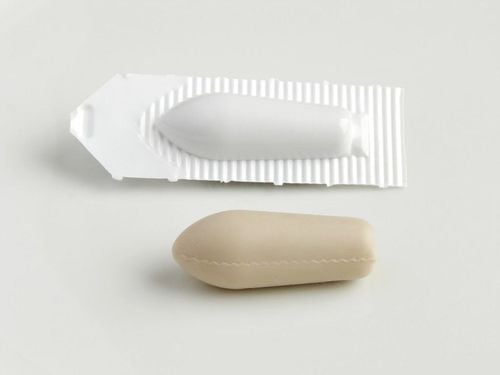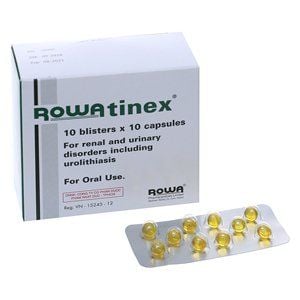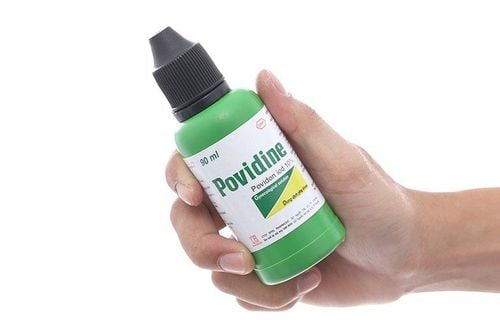Xylocream is a topical cream formulation containing Lidocaine and Prilocaine as its active ingredients. This medication is used to provide local anesthesia in both adults and children.
1. What is Xylocream?
What is Xylocream? Each gram of Xylocream contains: Lidocaine 25 mg, Prilocaine 25 mg and other excipients. Xylocream exerts its local anesthetic effect on the skin by releasing Lidocaine and Prilocaine. These active ingredients diffuse into the epidermis and dermis, where they accumulate around cutaneous pain receptors and nerve fibers, effectively blocking pain transmission.
Lidocaine and Prilocaine are amide-type local anesthetics. Both agents have the ability to stabilize neuronal cell membranes by inhibiting ion exchange necessary for cell depolarization, thereby producing a localized anesthetic effect. The depth of anesthesia depends on the duration of application and dosage. On intact skin, it typically takes 1 to 2 hours to achieve an adequate anesthetic effect.
Indications of Xylocream
For adults: Xyclocream is indicated for local anesthesia:
- On the skin for procedures such as:
- Intravenous catheter insertion or blood sampling;
- Superficial surgical procedures;
- Dermatological procedures on large, freshly shaved areas, such as laser hair removal;
- The mucous membranes of the genital tract, for example, prior to surface surgery or before administering anesthesia through the mucosa.
- Ulcers on the legs to facilitate cleaning or opening the lesion.
For children: Xylocream is indicated for use in neonates aged 0 - 2 months, infants aged 3 - 11 months, and children aged 1 - 11 years for its effect as a topical anesthetic, such as when performing venipuncture or blood sampling, or surface surgery. Additionally, Xylocream is also used for children with allergic dermatitis prior to the excision of inflamed nodules.
Contraindications of Xylocream:
- Patients who are hypersensitive to local anesthetics of the amide group or any excipients of the medication;
- Premature neonates (born before 37 weeks of gestation).
2. Dosage and administration of Xylocream
Administration: Apply to the skin.
Dosage: The dosage depends on the specific case, considering the area to be treated and the patient's age. Specifically:
For topical application: Apply a thick layer of cream to the skin and cover it with a sterile bandage:
- Adults: The recommended dose is approximately 1.5g/10cm2:
- For minor procedures including needle insertion, local wound treatment on the surface: Apply about 2 grams for 1 - 5 hours;
- For skin surgery on large skin areas in a hospital, such as skin grafting from a separated area: Apply about 1.5 - 2 grams/10cm2 for 2 - 5 hours;
- For skin surgery on large shaved areas, such as laser hair removal (performed by the patient): The maximum recommended dose is 60 grams. The maximum recommended dose for the treatment area is 600cm2 for at least 1 hour, and at most 5 hours.
- Children: For minor procedures such as needle insertion or local wound treatment on the surface: Apply approximately 1 gram/10cm2 for 1 hour:
- Neonates aged 0 - 2 months: Apply a maximum of 1 gram and 10cm2 for 1 hour;
- Infants aged 3 - 11 months: Apply a maximum of 2 grams and 20cm2 for 1 hour;
- Children aged 1 - 5 years old: Apply a maximum of 10 grams and 100cm2 for 1 - 5 hours;
- Children aged 6 - 11 years old: Apply a maximum of 20 grams and 200cm2 for 1 - 5 hours;
- Children with allergic dermatitis: Procedure performed before excising soft nodules, with a treatment duration of 30 minutes;
Mucous membranes of the genital tract:
- Adults treated for local surface wounds, such as the removal of genital warts (condyloma acuminatum), and prior to administering local anesthesia: Apply approximately 5 - 10 grams every 5 - 10 minutes, without the need for covering with a bandage. The procedure should be performed immediately after wiping off the Xylocream.
- Adults prior to cervical conization: Apply 10 grams of cream to the vaginal vault for 10 minutes.
The skin of the male genital area: Adults before local anesthesia injection: Apply a thick layer of cream, approximately 1 gram per 10cm2, and cover with an occlusive dressing for 15 minutes.
The skin of the female genital area: Adults before local anesthesia injection: Apply a thick layer of cream, approximately 1–2 gram per 10cm², and cover with an occlusive dressing for 60 minutes.
Leg ulcers: Adults requiring cleansing or debridement of leg ulcers: Apply a thick layer of cream, approximately 1–2 gram per 10cm2, up to a maximum of 10 grams, to the ulcerated area and cover with a dressing. The application time is 30–60 minutes. The ulcer should be cleaned immediately after wiping off the cream.
Precautions in patients with impaired liver function: Dose adjustment of Xylocream should be considered by reducing the frequency of application. For individuals who frequently apply or wipe off the cream, contact should be avoided to prevent hypersensitivity reactions.
Overdose: In rare cases, the use of high doses of Prilocaine (the main active ingredient of Xylocream) may lead to increased plasma methemoglobin levels, particularly when used in combination with methemoglobin-inducing drugs such as sulfonamides. The recommended use of local anesthetics alone generally does not reach toxic concentrations. However, if other local anesthetics are used concurrently to enhance the anesthetic effect, the overall effect may be potentiated, leading to overdose and systemic toxicity. The toxicity of local anesthetics is usually characterized by central nervous system stimulation, while cardiovascular and central nervous system depression are rare.
Management: Patients experiencing severe neurological symptoms such as seizures or central nervous system depression should receive symptomatic treatment, including respiratory support and the administration of anticonvulsant medications, as well as circulatory management according to resuscitation guidelines. Additionally, due to the slow absorption of the drug through the skin, patients showing signs of toxicity should be monitored in the hospital for several hours after emergency treatment.
3. Side effects of Xylocream
When using Xylocream, patients may experience certain side effects, including:
- Common: Transient reactions at the application site such as pallor, erythema, and skin edema;
- Uncommon: Initial mild burning sensation, itching, or warmth at the application site; localized paresthesia (e.g., itching); skin irritation at the application site;
- Rare: Methemoglobinemia-induced anemia; skin lesions at the application site (purpura, particularly after prolonged use in children with atopic dermatitis or molluscum contagiosum); ocular irritation following eye exposure; allergic reactions (the most severe being anaphylactic shock).
4. Precautions when using Xylocream
Before and during the use of Xylocream, patients should be aware of the following:
- Individuals with G6PD deficiency, hereditary or idiopathic methemoglobinemia-induced anemia are more sensitive to methemoglobinemia-related symptoms caused by Xylocream;
- Xylocream should not be applied to damaged skin or open wounds, except for leg wounds (including leg ulcers), due to the lack of clinical data on drug absorption in such cases;
- Due to increased absorption of Xylocream on freshly shaved skin, patients must strictly adhere to the recommended dosage, application area, and duration of use;
- Use Xylocream with caution in patients with atopic dermatitis. The application time should be shortened to approximately 15–30 minutes, as prolonged application beyond 30 minutes may lead to local vascular reactions, including erythema, swelling at the application site, and purpura; Before performing curettage of molluscum contagiosum lesions in children with atopic dermatitis, Xylocream should be applied for 30 minutes;
- Due to the lack of data on drug absorption, Xylocream should not be applied to the genital mucosa in children;
- Avoid contact between Xylocream and the eyes, as it may cause ocular irritation. Additionally, the loss of protective reflexes may lead to corneal irritation, potentially resulting in corneal abrasions. If Xylocream gets into the eyes, immediately rinse with clean water or a sodium chloride solution, protect the eyes until normal function is restored;
- Xylocream should not be applied in cases of compromised tympanic membrane integrity. Animal studies have shown that Xylocream may exhibit ototoxicity when the drug enters the middle ear;
- In infants under 3 months of age, an increase in methemoglobin levels has commonly been observed within 12 hours after the application of Xylocream;
- Patients receiving Class III antiarrhythmic agents, such as amiodarone, should be closely monitored, including ECG monitoring, due to potential cardiac side effects;
- Studies have not demonstrated the efficacy of Xylocream for heel lance procedures in neonates;
- Lidocaine and Prilocaine possess bactericidal and antiviral properties at concentrations above 0.5–2%. Therefore, the efficacy of live attenuated subcutaneous vaccines should be monitored after administration;
- Until further clinical data are available, Xylocream should not be used in the following cases: Infants aged 0–12 months undergoing treatment with methemoglobin-inducing drugs; Preterm neonates (born before 37 weeks of gestation);
- Xylocream should not be used in patients with recurrent porphyria;
- Patients with severe debilitation, sepsis, acute illness, severe renal impairment, or liver damage, as well as children over 12 years of age weighing less than 25 kg, should receive Xylocream based on body weight and overall health status;
- Excessive doses of Lidocaine or short intervals between administrations may lead to increased plasma drug concentrations, resulting in serious side effects. Patients should be made aware of the importance of strictly adhering to the recommended dosage. The management of severe side effects may require resuscitation equipment, oxygen, and supportive medications;
- When lidocaine is used in combination with another local anesthetic, caution should be exercised if the dosage or administration method may lead to increased plasma drug concentrations in patients with bradycardia, epilepsy, impaired renal function, or severe shock;
- Lidocaine should be used with caution in patients with hypovolemia, Wolff-Parkinson-White syndrome, cardiovascular block, and neurological disorders;
- Xylocream contains polyoxyl 40 hydrogenated castor oil, which may cause skin reactions;
- Xylocream may be used in pregnant women; however, patients should use the medication cautiously and strictly follow the physician’s instructions;
- Xylocream can be used during breastfeeding
5. Drug interactions of Xylocream
Some drug interactions of Xylocream include:
- High doses of prilocaine may lead to increased plasma methemoglobin levels, especially when used in combination with methemoglobin-inducing drugs, such as sulfonamides;
- With high doses of Xylocream, systemic toxicity should be considered when patients are concurrently using other local anesthetics, as this may lead to increased toxicity;
- Use caution when combining Lidocaine/Prilocaine with Class III antiarrhythmic drugs, such as amiodarone;
- Medications that reduce the clearance of lidocaine, such as cimetidine or beta-blockers, may elevate plasma lidocaine levels to toxic concentrations if high doses are used repeatedly over a prolonged period.
When using Xylocream, patients should strictly follow their physician’s instructions to achieve optimal therapeutic effects and minimize the risk of potential side effects.
Visit the Vinmec International General Hospital website for more health-related information on wellness, nutrition, and skincare to safeguard your health and that of your loved ones.
Please dial HOTLINE for more information or register for an appointment HERE. Download MyVinmec app to make appointments faster and to manage your bookings easily.
To arrange an appointment, please call HOTLINE or make your reservation directly HERE. You may also download the MyVinmec app to schedule appointments faster and manage your reservations more conveniently.








